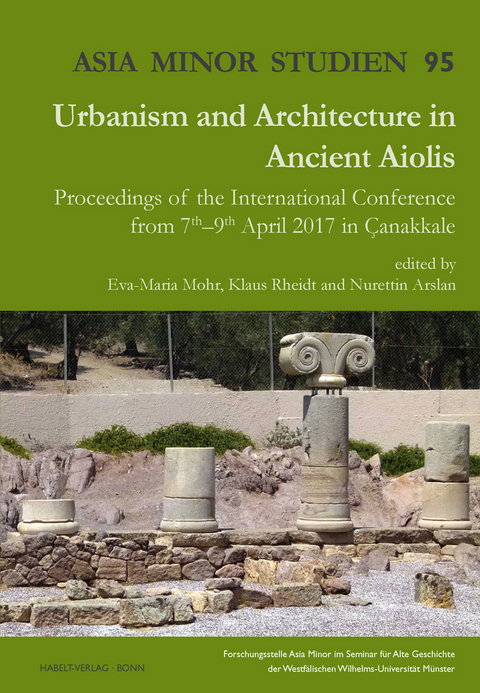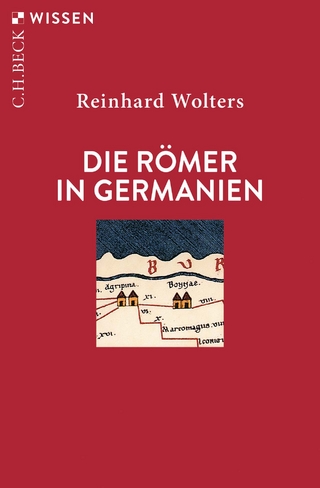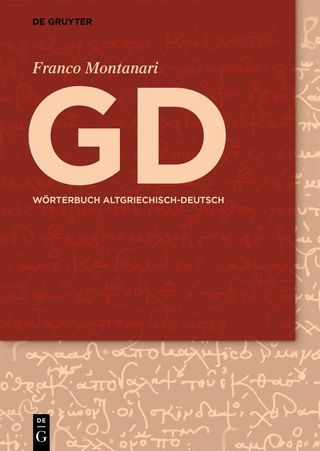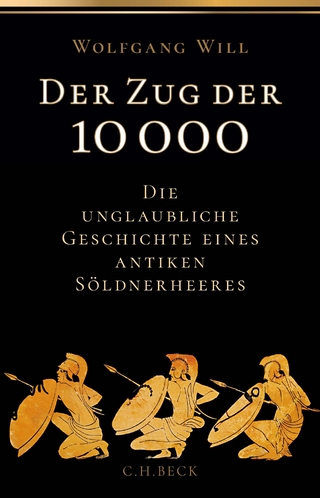
Urbanism and Architecture in Ancient Aiolis
Proceedings of the International Conference from 7th-9th April 2017 in Çanakkale. Ed. by Mohr, Eva-Maria/ Rheidt, Klaus/ Arslan, Nurettin
Seiten
2020
Habelt, R (Verlag)
978-3-7749-4253-0 (ISBN)
Habelt, R (Verlag)
978-3-7749-4253-0 (ISBN)
From prehistoric times the region of ancient Aiolis has been characterized by mutual interests of political powers, expansionism, and migration. The region covering northwestern Asia Minor and the offshore Aegean islands has always been an ideal contact zone for cultural and economical exchange between east and west. Its geographical situation, natural qualities, and changing political affiliations led to an intriguing mixture of cultures, shaping cityscapes and architecture until today. Even though it is one of the larger ancient Greek landscapes the Aiolis as a whole is still relatively unknown. Over the past two decades research has been carried out in most localized settlements, revealing new insights into the Aiolian cities’ urban structure and architecture. Urban history in the region’s geographical macrocosm, however, has not been comprehensively studied from the perspective of long-term urban development and its architectural expressions.
This publication originated at the Spring 2017 International Conference on Urbanism and Architecture of Ancient Aiolis in Çanakkale. The conference’s aim was to collect extensive information on urban development with corresponding local or regional architectural expressions in the Aiolian macrocosm such as similarities and differences in spatial expressions, urban processes and construction programs as well as infrastructure and urban homogeneity or heterogeneity. The results of successive intense debates covering these topics were included in the final conference papers.
This volume represents the results of current, still mostly unpublished research carried out by international archaeologists and building researchers. The investigated sites show a wide range of diversity concerning location, political affiliation, and population. Even if it is impossible to define Aiolian culture in an overall cultural or ethnic sense, common urban developments and architectural expressions are evident: the Aiolic style in Archaic architecture, the Lesbian masonry as well as Late Classical ashlar fortifications and city planning. This publication’s contributions describe the close economic, cultural, and political affinities between Lesbos and the neighbouring coastal regions which were, at least temporarily, loaded with references to a mythical Aiolian past. The Aiolian cities and their architecture created the framework for the social, political, and religious practices of the responsible actors who had, however, limited margins due to the varying power relations and the omnipresent inter-city competitiveness. In this sense urbanism and architecture provide convincing explanatory models for transformation processes, which complement the limited historical sources to create a vivid picture of ancient Aiolis, its settlement history, and its cultural particularities.
This publication originated at the Spring 2017 International Conference on Urbanism and Architecture of Ancient Aiolis in Çanakkale. The conference’s aim was to collect extensive information on urban development with corresponding local or regional architectural expressions in the Aiolian macrocosm such as similarities and differences in spatial expressions, urban processes and construction programs as well as infrastructure and urban homogeneity or heterogeneity. The results of successive intense debates covering these topics were included in the final conference papers.
This volume represents the results of current, still mostly unpublished research carried out by international archaeologists and building researchers. The investigated sites show a wide range of diversity concerning location, political affiliation, and population. Even if it is impossible to define Aiolian culture in an overall cultural or ethnic sense, common urban developments and architectural expressions are evident: the Aiolic style in Archaic architecture, the Lesbian masonry as well as Late Classical ashlar fortifications and city planning. This publication’s contributions describe the close economic, cultural, and political affinities between Lesbos and the neighbouring coastal regions which were, at least temporarily, loaded with references to a mythical Aiolian past. The Aiolian cities and their architecture created the framework for the social, political, and religious practices of the responsible actors who had, however, limited margins due to the varying power relations and the omnipresent inter-city competitiveness. In this sense urbanism and architecture provide convincing explanatory models for transformation processes, which complement the limited historical sources to create a vivid picture of ancient Aiolis, its settlement history, and its cultural particularities.
| Erscheinungsdatum | 07.11.2020 |
|---|---|
| Reihe/Serie | Asia Minor Studien ; 95 |
| Zusatzinfo | einige Abb., 126 (32 farb.) Taf. |
| Sprache | englisch |
| Maße | 190 x 280 mm |
| Themenwelt | Geisteswissenschaften ► Archäologie |
| Geschichte ► Allgemeine Geschichte ► Altertum / Antike | |
| Schlagworte | Antike • Architektur • Kleinasien • Städtewesen |
| ISBN-10 | 3-7749-4253-6 / 3774942536 |
| ISBN-13 | 978-3-7749-4253-0 / 9783774942530 |
| Zustand | Neuware |
| Haben Sie eine Frage zum Produkt? |
Mehr entdecken
aus dem Bereich
aus dem Bereich
Die unglaubliche Geschichte eines antiken Söldnerheeres
Buch | Hardcover (2022)
C.H.Beck (Verlag)
28,00 €


